Enzymatic Food Analysis
Jvo Siegrist
AnalytiX Volume 9 Article 2
Enzymatic methods for food analysis are highly specific and offer considerable time and cost savings over other methods, especially from the sample preparation standpoint. We offer a wide variety of convenient kits and reagents for rapid and reliable enzymatic food analysis.
Because of the importance of enzymatic methods in food production and assurance of quality and safety, there are many textbooks, national and international industry associations and government agencies devoted to the subject. Like many other analytical methods, enzymatic analysis was used first in clinical diagnosis, then adapted for the determination of food ingredients. The high specificity of enzymes enables the analysis in complex sample matrixes without complicated sample preparation techniques. This makes enzymatic food analysis a highly valuable tool because it saves time, reduces costs and gives reliable results independent of the sample matrix. Additionally, enzymatic methods use non-hazardous reagents, are environmentally friendly and can be automated for in-line process monitoring.
Applications: Carbohydrate and dietary fibre levels
Qualitative and quantitative analysis in the food and beverage industry is extremely important from quality, storage, nutrition and safety standpoints. The levels of certain carbohydrates, like glucose, lactose, fructose, sucrose and starch, affect intolerance conditions, diabetes and obesity. The presence of unwanted carbohydrates or their hydrolysis products can alter the manufacturing process or reduce product shelf life. They can also indicate microbial contamination (e.g. yeasts) or improper processing (e.g. overheating). For fruit juice and wine, raw materials that have variable sugar content influence the quality of the finished product and should therefore be monitored.
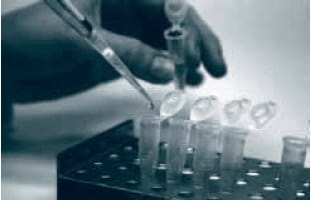
Figure 1.Enzyme assay
Determination of dietary fibre is another important food analysis. Consuming high-fibre foods, like fruits, vegetables, nuts and grains, is recommended to treat or prevent such maladies as constipation, haemorrhoids and diverticulitis. Water-soluble fibre also helps decrease blood cholesterol levels. From a chemical perspective, dietary fibre is a mixture of complex organic substances, including hydrophilic compounds, like soluble and insoluble polysaccharides and non-digestable oligosaccharides, and a range of non-swellable, relatively hydrophobic compounds, like cutins, suberins and lignins. Verifying a high content of dietary fibre in food permits a higher quality grading and access to higher-end product markets.

Figure 2.Natural fruit juice contains dietary fibre and many different sugars
Detection principle of enzymatic reactions
Enzymatic methods to determine analyte concentration typically employ photometry to measure the concentration changes of specific products or substrates during the enzyme-catalysed reaction. Concentration of compound of interest is measured using the reaction stoichiometry.
Some commonly employed enzyme systems include:
- Nicotinamide adenine dinucleotide (NADH/NAD+) coenzyme system
- Activity of dehydrogenases using the NAD+/NADH system is measured by monitoring the changes in absorbance at 340 nm. NADH has an absorption maximum at 340 nm, while the oxidised form NAD+ does not absorb at this wavelength.
- H2O2 production (Oxidase/peroxidase system)
- Oxidases cleave H2O2 from molecules (e.g. glucose) and o-dianisidine is oxidised with the enzyme peroxidase and H2O2. Oxidized o-dianisidine reacts with sulphuric acid to form a more stable pink-coloured product that can be measured at 540 nm.
Carbohydrate assay kits
The kits for the enzymatic assay of sucrose, fructose and starch are based on the enzymatic determination of glucose. The first step is the conversion or degradation of the carbohydrate to glucose or glucose derivate. The glucose concentration is then determined according to the two different detection systems: glucose oxidase (GO) or hexokinase (HK) in combination with the glucose-6-phosphate dehydrogenase reaction.

Figure 3.Glucose (GO) assay kit Detection of glucose via glucose oxidase (GO) and peroxidase, monitored at 540 nm.

Figure 4.Glucose (HK) assay kit Detection of glucose via hexokinase (HK) and glucose-6-phosphate dehydrogenase by formation of NADH, monitored at 340 nm.
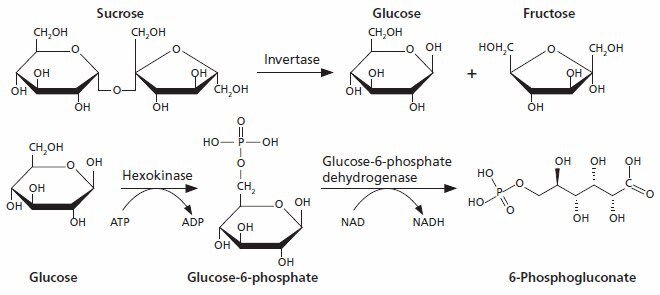
Figure 5.Sucrose assay kit Sucrose is hydrolysed to glucose and fructose by invertase. Glucose and fructose are phosphorylated with ATP in the hexokinase reaction. Glucose-6- phosphate and NAD are then converted to 6-phosphogluconate and NADH via glucose-6-phosphate dehydrogenase, monitored at 340 nm.
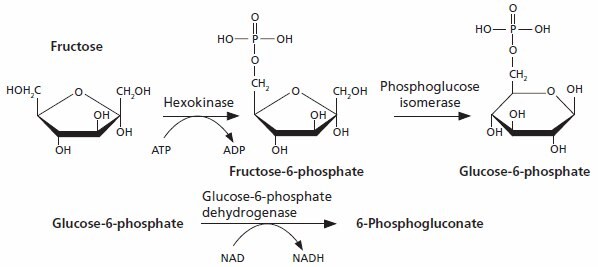
Figure 6.Fructose assay kit Fructose is phosphorylated by ATP in a reaction catalysed by hexokinase. The resulting fructose-6-phosphate is then converted to glucose-6- phosphate by phosphoglucose isomerase. Glucose-6-phosphate and NAD is converted to 6-phosphogluconate and NADH, monitored at 340 nm.
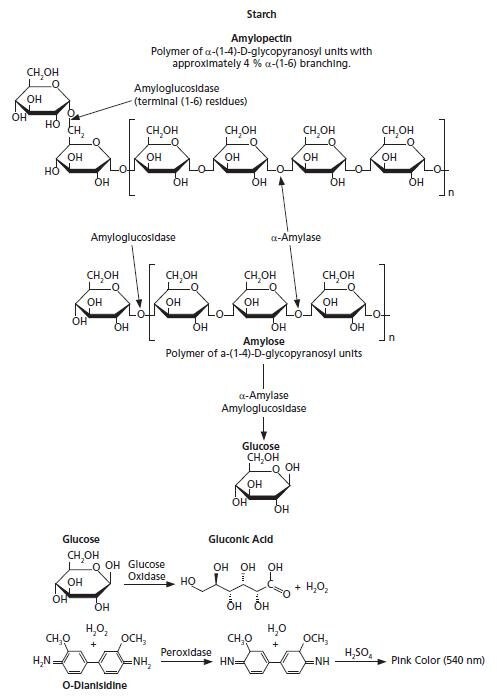
Figure 7.Starch (GO/P) assay kit The hydrolysis of starch to glucose is catalysed by α-amylase and amyloglucosidase. Glucose is then converted to gluconic acid and H2O2 by glucose oxidase; detection of H2O2 via peroxidase reaction at 540 nm (proportional to the original starch concentration).
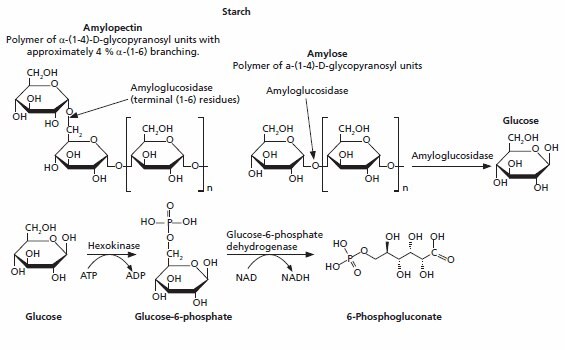
Figure 8.Starch (HK) assay kit The hydrolysis of starch to glucose is catalysed by amyloglucosidase. Glucose is phosphorylated by ATP in a reaction catalysed by hexokinase. Glucose-6-phosphate and NAD is converted to 6-phosphogluconate and NADH; detection of NADH at 340 nm (proportional to the original starch concentration).
Total dietary fibre assay kit
The total dietary fibre content is determined by a combination of enzymatic and gravimetric methods. Samples of dried, fat-free foods are gelatinised with heat-stable amylase and then enzymatically digested with protease and amyloglucosidase to remove protein and starch in the sample. Ethanol is added to precipitate the soluble dietary fibre. The residue is then filtered and washed with ethanol and acetone. After drying, the residue is weighed. Half of the sample is analysed for protein and the other half is ashed. Total dietary fibre equals weight of residue minus weight of protein and ash.
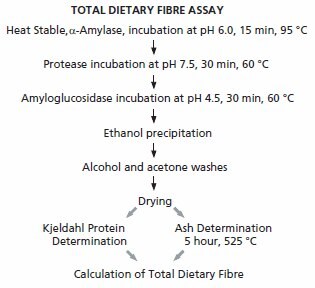
Figure 9.Flow chart of Total dietary fibre assay kit
Additional information and instruction bulletins to all our enzymatic assay kits are available on our website.
如要继续阅读,请登录或创建帐户。
暂无帐户?